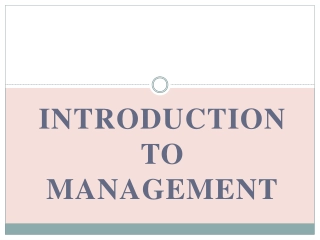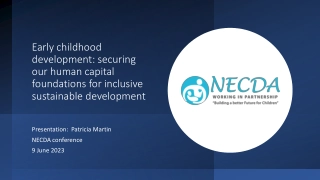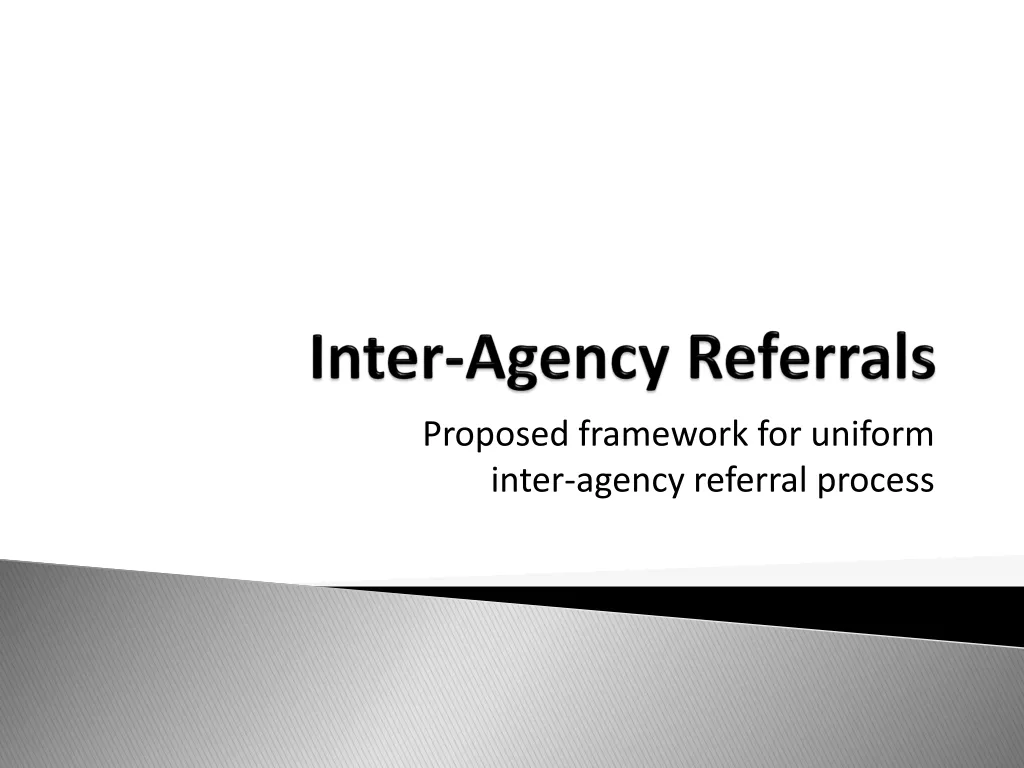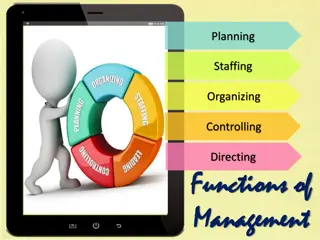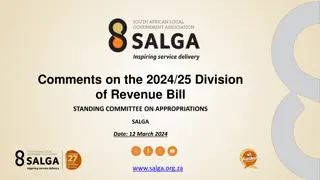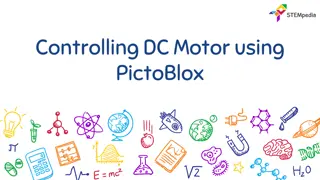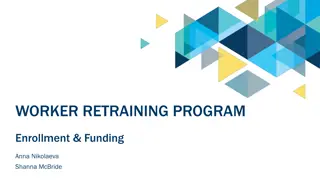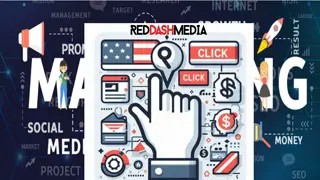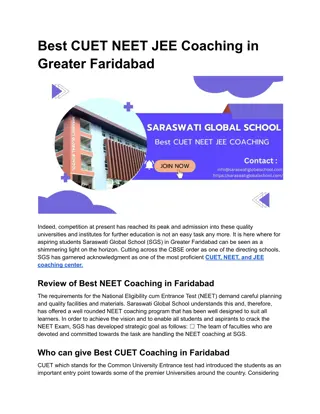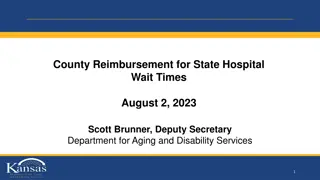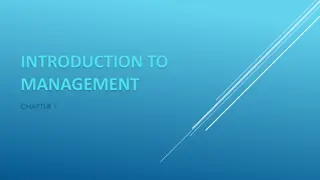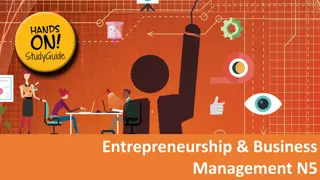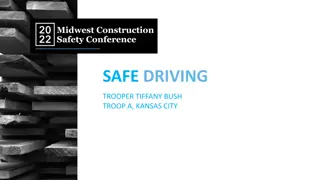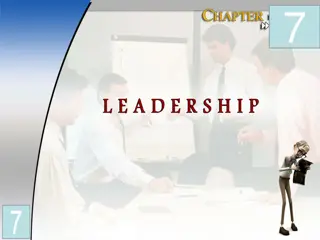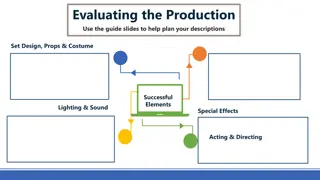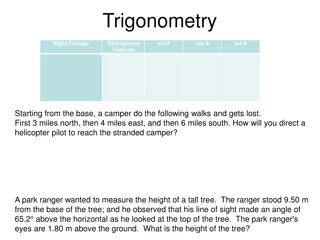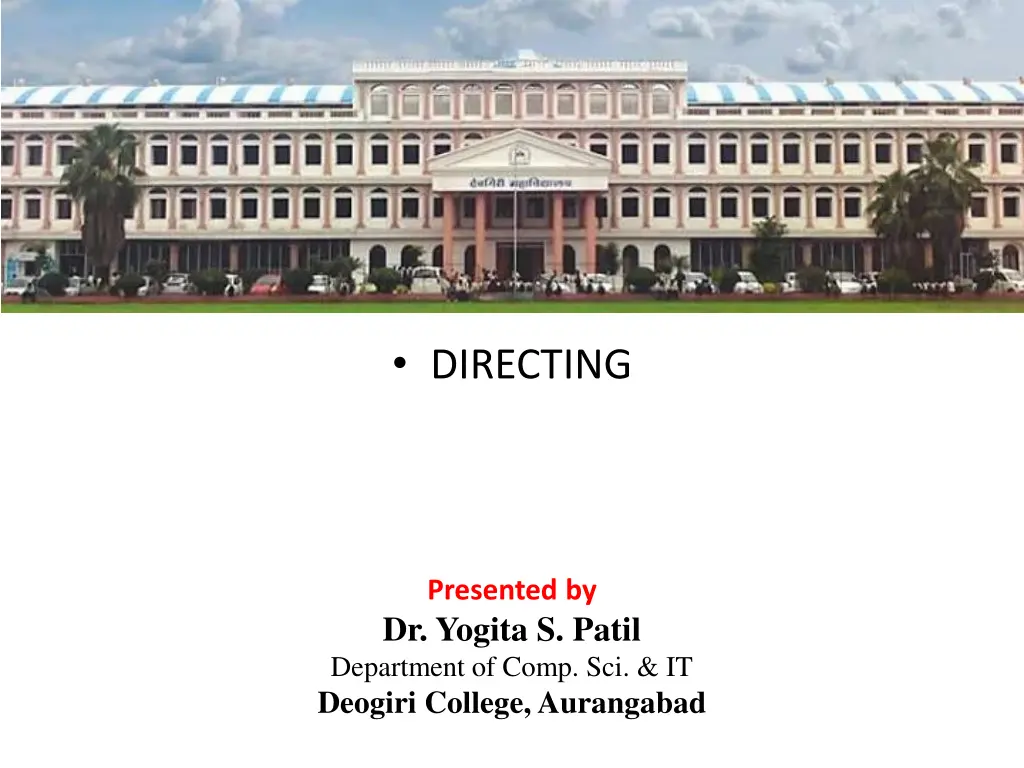
Understanding Creativity in Directing and Leadership
Explore the concept of creativity in directing, its importance in leadership, and the intellectual skills needed to foster innovation. Learn how creativity influences work motivation, communication effectiveness, and employee behavior management in organizations.
Download Presentation

Please find below an Image/Link to download the presentation.
The content on the website is provided AS IS for your information and personal use only. It may not be sold, licensed, or shared on other websites without obtaining consent from the author. If you encounter any issues during the download, it is possible that the publisher has removed the file from their server.
You are allowed to download the files provided on this website for personal or commercial use, subject to the condition that they are used lawfully. All files are the property of their respective owners.
The content on the website is provided AS IS for your information and personal use only. It may not be sold, licensed, or shared on other websites without obtaining consent from the author.
E N D
Presentation Transcript
DIRECTING Presented by Dr. Yogita S. Patil Department of Comp. Sci. & IT Deogiri College, Aurangabad
UNIT 4 DIRECTING Dr. Yogita S. Patil 1 2
Directing Involves motivating subordinates, influencing individuals or teams as they work, selecting the most effective communication channels or dealing in any way with employee behavior issues. 1 3
Creativity - Defined Creativity is the development of ideas about products, practices, services, or procedures that are novel and potentially useful to the organization
What Is Creativity? Creativity Needs: Skill:Learned capacity or talent to carry out pre-determined results. Talent:Natural endowments of a person. Personality:Patterns of relatively enduring characteristics of human behavior.
Intellectual Skills: Humans have intellectual skills that allow them to have creativity . . . Choosing Predicting Interpreting Translating Recalling Manipulating
Choosing: To select from a number of possibilities and pick by preference. Predicting: To state, tell about, or make something known in advance, on the basis of special knowledge. Interpreting: To explain and understand the meaning of something and to conceive the significance of it.
Translating: To transform something from one state to another. Recalling: To remember and bring back to mind a previous subject or situation. Manipulating: To handle, manage, or use (sometimes with skill) an object in a process or performance.
Use Your Own Process: With these skills we are able to . . . select knowledge and use it toward a specific goal. interpret communication and share it. remember previous knowledge and use it skillfully. Use 1 or more of the 6 intellectual skills to come up with a creative idea
Creativity can come in different forms . . . Scientific: inventions or medical cures. Artistic/Musical: beautiful paintings, sculptures, or songs. Creative Writing: novels, short stories, and poems.
Innovation - Defined Innovation is the implementation of new ideas at the individual, group or organizational level
ELEMENTS OF DIRECTION Communication Leading Motivation Supervision Coordination
Communication and Management Communication The sharing of information between two or more individuals or groups to reach a common understanding. 16-15
Communication and Management Importance of Good Communication Increased efficiency in new technologies Improved quality of products and services Increased responsiveness to customers More innovation through communication
The Communication Process Phases of the Communication Process: Transmission phase in which information is shared by two or more people. Feedback phase in which a common understanding is assured. 16-17
Most Common Way to Communicate Speakin g Writing Body languag e Visual images
The Communication Process Sender person wishing to share information with some other person Message what information to communicate Encoding sender translates the message into symbols or language Noise refers to anything that hampers any stage of the communication process
The Communication Process Receiver person or group for which the message is intended Medium pathway through which an encoded message is transmitted to a receiver Decoding - critical point where the receiver interprets and tries to make sense of the message
Verbal & Nonverbal Communication Verbal Communication The encoding of messages into words, either written or spoken Nonverbal The encoding of messages by means of facial expressions, body language. 16-22
Communication Media Face-to-Face Has highest information richness. Can take advantage of verbal and nonverbal signals. 16-23
Communication Media Spoken Communication Electronically Transmitted Has the second highest information richness. Telephone conversations are information rich with tone of voice, sender s emphasis, and quick feedback, but provide no visual nonverbal cues. 16-24
Communication Media Personally Addressed Written Communication Has a lower richness Personal addressing helps ensure receiver actually reads the message personal letters and e-mail are common forms. 16-25
E-Mail Dos and Donts E-mail allows telecommuting employees to work from home and keep in contact. Pay attention to spelling and treat the message like a written letter. 16-26
Communication Media Impersonal Written Communication Has the lowest information richness. Good for messages to many receivers where little or feedback is expected (e.g., newsletters, reports) 16-27
Communication Networks in Groups and Teams Type of Network Wheel Network Information flows to and from one central member. Chain Network Members communicate only with the people next to them in the sequence. Wheel and chain networks provide little interaction. Circle Network Members communicate with others close to them in terms of expertise, experience, and location. All-Channel Network Networks found in teams with high levels of communications between each member and all others. 16-28
Communication Networks in Groups and Teams 16-29
Technological Advances in Communication Internet Global system of computer networks that is easy to join and is used by employees to communicate inside and outside their companies World Wide Web (WWW) Business district with multimedia capabilities 16-30
Technological Advances in Communication Intranets A company-wide system of computer networks for information sharing by employees inside the firm. Advantages of intranets Can be used for a number of different purposes by people who may have little expertise in computer software and programming 16-31
Technological Advances in Communication Groupware Computer software that enables members of groups and teams to share information with each other and improve communication. 16-32
New Technologies for Communication Informational databases Electronic mail systems Voice mail systems Fax machine systems Cellular phone systems C:\Documents and Settings\bergmama\Application Data\Microsoft\Media Catalog\Downloaded Clips\cl4f\j0199813.wmf
Barriers to Effective Communication Messages that are unclear, incomplete, difficult to understand Messages with no provision for feedback Messages that are misunderstood Messages delivered through automated systems that lack the human element 16-34
Movie Example: The Terminal Is there communication between Viktor and Frank? Why or why not? Photo of The Terminal, Stanley Tucci, Tom Hanks 16-35
Downward Communication Travels from superior to subordinates. To give specific task directives about job instruction To give information about organization procedures and practices
To tell subordinates about their performance To provide ideological-type information to facilitate the goals
Upward Communication Travels from subordinate to superior. The most common purpose of this communication is to provide feedback on how well things are going. It provides also the middle level managers the opportunity to represent their subordinates to the upper level managers.
Lateral Communication level of the management hierarchy. The most common reason for this communication flow is to provide coordination and teamwork Takes place between people in the same
Diagonal Communication the same department nor in the same level of management hierarchy. In this case, someone communicate either downward or upward with someone in another functional area. Occurs between people who are neither in
OVERCOMING BARRIERS TO COMMUNICATION
Use feedback to facilitate understanding and increase the potential for appropriate action Repeat message in order to provide assurance that they are properly received
Use multiple channels so that the accuracy of the information may be enhanced Use simplified language that are easily understandable and which eliminates the possibility of people getting mixed-up with meanings
Motivation is the work a manager performs to inspired, encourage, people to take required action
Need Theory People are motivated to obtain outcomes at work to satisfy their needs. 1)Managers must determine what needs worker wants satisfied. 2)Ensure that a person receives the outcomes when performing well. Several needs theories exist. Maslow s Hierarchy of Needs. Alderfer s ERG.
Maslows Hierarchy of Needs Need Level Description Examples Realize one s full potential Use abilities to the fullest Self- Actualization Feel good about oneself Promotions & recognition Esteem Social Interpersonal relations, parties Belongingness interaction, love Job security, health insurance Security, stability Safety Food, water, shelter Basic pay level to buy items Physiological Lower level needs must be satisfied before higher needs are addressed.
Alderfers ERG Need Level Description Examples Highest Self-development, creative work Worker continually improves skills Growth Interpersonal relations, feelings Good relations, feedback Relatedness Lowest Food, water, shelter Basic pay level to buy items Existence After lower level needs satisfied, person seeks higher needs. When unable to satisfy higher needs, lower needs motivation is raised.
Maslows Hierarchy of Needs C:\Documents and Settings\bergmama\Application Data\Microsoft\Media Catalog\Downloaded Clips\cl4f\j0199813.wmf SA Esteem Love (Social) Safety & Security Physiological


